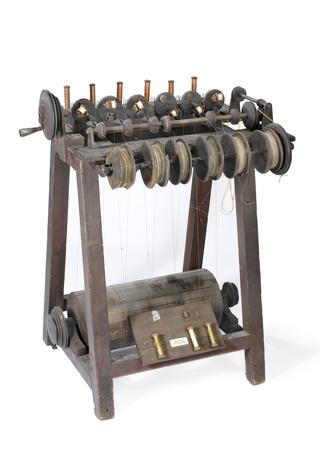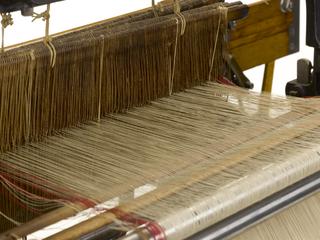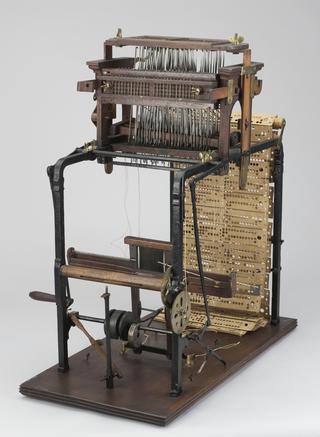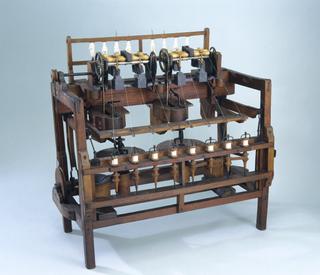
Model of a Drawing Machine
- patentee:
- John George Bodmer
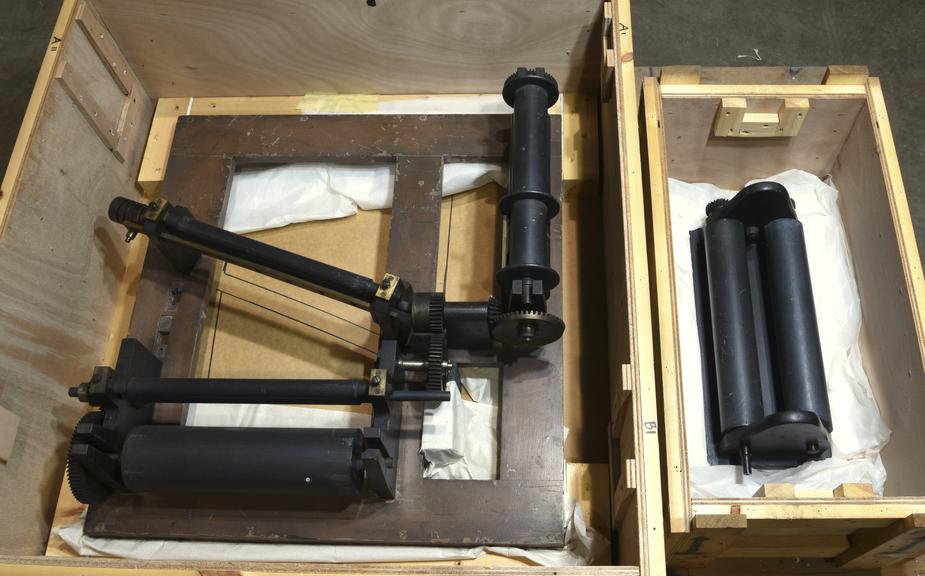
Model of a drawing machine, patentee John George Bodmer, 1824, England, to separate slivers, increase their length 12-15 times and recombine into a lap.
This model represents a form of stretching or drawing machine included in John George Bodmer's patent of 1824. The cotton lap, which has been prepared in the form of a roll by his lap machine (inventory no. 1857-116), is placed upon two horizontal rollers, which, revolving in the same direction, rotate the lap at a uniform linear speed, and unwind it. The several slivers of the lap are passed together through drawing rollers, by which their length is increased from 12 to 15 times ; each passes through a separate hole in a horizontal guiding rail, and they are then wound together into a fresh lap or roll. As the extension greatly reduces the diameter of the slivers, they cannot form, after drawing, a lap of the original width; so, to close them together uniformly, the final lap is wound on a horizontal axis at right angles to that of the drawing rollers, an intermediate directing roller dividing the 90 deg. unequally. The guiding rail is reciprocated longitudinally by a double-grooved cylindrical cam, and to permit of the adjustment of the inclination of the directing roller it is driven by a universal joint. Mr. Bodmer intended to place 25 of these heads in one machine and to wind up the 200 slivers so treated in one roll, which was then to be sent on to the throstles or mules and be spun into thread. To give strength to the roll, he wound in with the lap a cloth of equal width.
Details
- Category:
- Textiles Machinery
- Object Number:
- 1857-102
- Measurements:
-
larger section: 240 mm x 836 mm x 780 mm,
smaller section: 240 mm x 555 mm x 205 mm,
- type:
- drawing machine
- credit:
- Bodmer, R.
